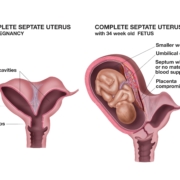Insomnia During Pregnancy
It’s normal to have trouble sleeping at any point during pregnancy, but many expectant women experience insomnia starting in the second to third trimesters, as other pregnancy symptoms increase, and a burgeoning baby belly makes it harder than ever to get comfortable in bed.
Still, first trimester woes can force you from your cozy bed and disturb precious sleep too, including morning sickness, which can happen any time of the day or night, and a constant need to pee. But if you’re worried that a case of insomnia may harm your baby, rest assured it won’t. So do your best not to fret and sometimes, just letting go of these feelings is all it takes to help you sleep.
What is Insomnia?
Insomnia is a sleep disorder that makes it hard to drift off to sleep or stay asleep at night. This common sleep problem can also cause you to wake up too early and not be able to head back to dreamland, and it may make you feel as if the sleep you did manage to get wasn’t refreshing or restorative.
What Causes Insomnia During Pregnancy?
Insomnia during early pregnancy is usually due to factors such as hormonal changes. Many people experience insomnia at some point, during pregnancy. Better sleep hygiene, relaxation techniques, and cognitive behavioral therapy can help. Levels of the hormone progesterone are high during the first trimester, and this can cause sleepiness and napping during the day.
Aside from hormonal changes, factors that may make insomnia worse includes hunger, spicy foods, which may cause digestion issues, especially if eaten near bedtime, nausea, anxiety or depression, physical discomfort, and frequent bathroom trips. Other less obvious causes include difficulty breathing, with this difficulty sometimes affecting a person’s breathing at night when they are pregnant. This can cause snoring and brief pauses in breathing called apnea. Breathing problems during sleep at the end of the second and during the third trimester are more common.
Will Insomnia During Pregnancy Harm The Baby?
It’s understandable to assume that if you aren’t sleeping well, your baby isn’t either. But relax, your baby sleeps even when you’re wide awake. Your baby’s health is at risk, however, if your insomnia during pregnancy affects your ability to function. If you fall asleep while driving, or exhaustion leads you to stumble or fall, your baby could pay the price. Furthermore, research has found that women who have chronically disturbed sleep during pregnancy are at greater risk of gestational diabetes, preterm birth, depression, longer labor, and cesarean section. So it’s well worth doing what you can to sleep well.
What Can You Do To Improve Sleep During Pregnancy?
- Consider using a pregnancy pillow
- Diet and exercise
- Eat a healthy dinner
- Get a massage
- Establish good sleep habits.
- Create the ideal sleeping space
- Try to relax
Feeling exhausted is a common pregnancy symptom, particularly at the beginning and end of your pregnancy. However, if you always feel like you are finding yourself needing to sleep at all hours of the day, it may be time to speak with your doctor. They can make sure that no underlying medical conditions are causing this.
Disclaimer
The information, including but not limited to, text, graphics, images and other material contained on this website are for informational purposes only. The purpose of this website is to promote broad consumer understanding and knowledge of various health topics. It is not intended to be a substitute for professional medical advice, diagnosis, or treatment. Always seek the advice of your physician or another qualified healthcare provider with any questions you may have regarding a medical condition or treatment before undertaking a new health care regimen, and never disregard professional medical advice or delay in seeking it because of something you have read on this website.
References:
https://www.healthline.com/health/pregnancy/excessive-sleeping-during-pregnancy#sleep-tips
https://www.healthline.com/health/pregnancy/early-insomnia#comfortis-key










